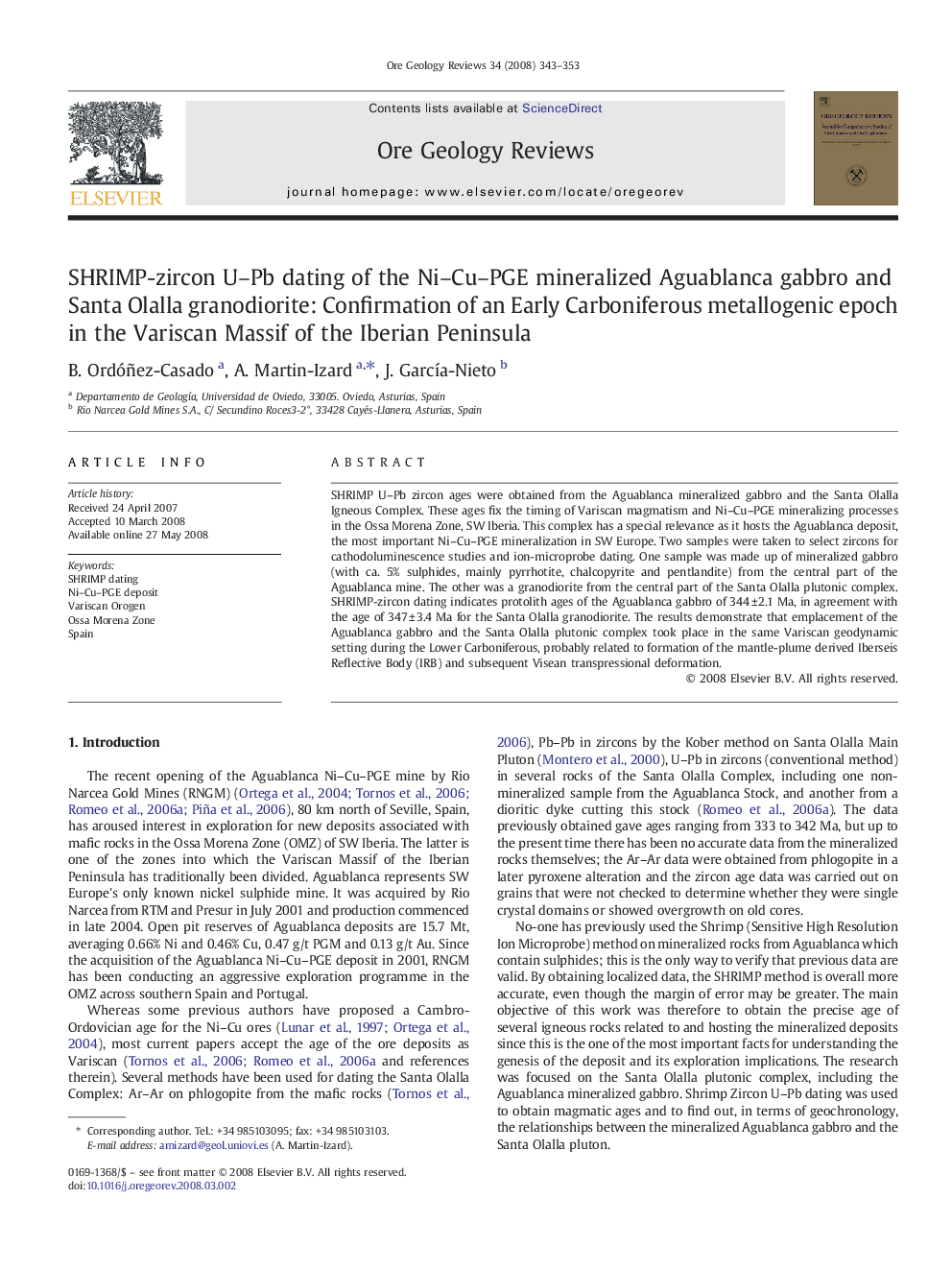| Article ID | Journal | Published Year | Pages | File Type |
|---|---|---|---|---|
| 4697976 | Ore Geology Reviews | 2008 | 11 Pages |
SHRIMP U–Pb zircon ages were obtained from the Aguablanca mineralized gabbro and the Santa Olalla Igneous Complex. These ages fix the timing of Variscan magmatism and Ni–Cu–PGE mineralizing processes in the Ossa Morena Zone, SW Iberia. This complex has a special relevance as it hosts the Aguablanca deposit, the most important Ni–Cu–PGE mineralization in SW Europe. Two samples were taken to select zircons for cathodoluminescence studies and ion-microprobe dating. One sample was made up of mineralized gabbro (with ca. 5% sulphides, mainly pyrrhotite, chalcopyrite and pentlandite) from the central part of the Aguablanca mine. The other was a granodiorite from the central part of the Santa Olalla plutonic complex. SHRIMP-zircon dating indicates protolith ages of the Aguablanca gabbro of 344 ± 2.1 Ma, in agreement with the age of 347 ± 3.4 Ma for the Santa Olalla granodiorite. The results demonstrate that emplacement of the Aguablanca gabbro and the Santa Olalla plutonic complex took place in the same Variscan geodynamic setting during the Lower Carboniferous, probably related to formation of the mantle-plume derived Iberseis Reflective Body (IRB) and subsequent Visean transpressional deformation.
